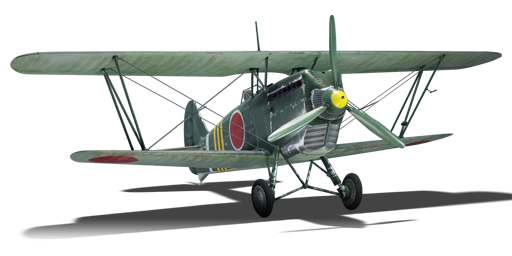

This Ki-10-I (Commander), designated as Type 95 Fighter (九五式戦闘機), was assigned to the 1st Hiko Sentai, which was established on July 5, 1938 as the first flying unit in the Japanese Army Air Service. The 1st Hiko Sentai operated the Ki-10-I until May 1942, when it switched to the Ki-27. The Ki-10-I was then retired to training and secondary missions.
In the game since the start of the Open Beta Test prior to Update 1.27, the Ki-10-I C performs similarly to the other Ki-10s. It has a good turn rate, fair climb, low speed, and minimal armour. It is faster and climbs better than other biplanes, but has weaker guns and protection. The Ki-10-I can turn-fight well at low altitudes, but should avoid stalls and spins. Its 7.7 mm guns have low fire rate and poor belts. Stealth belt is the best choice. The Ki-10-I should not attack armoured targets or bombers, but focus on other biplanes or slow monoplanes. Aim for the wings, not the fuselage. Teamwork is essential for the Ki-10-I.
flaps
flaps
flaps
brake
control
| Belt | Belt filling | Armor penetration (mm) at a distance: | |||||
|---|---|---|---|---|---|---|---|
| 10 m | 100 m | 500 m | 1000 m | 1500 m | 2000 m | ||
| T/AP/IAI/AP/I | 13 | 12 | 7 | 3 | 2 | 0 | |
| T/AP/IAI/AP | 13 | 12 | 7 | 3 | 2 | 0 | |
| T/T/T/AP | 13 | 12 | 7 | 3 | 2 | 0 | |
| I/AP/AP/AP/IAI | 13 | 12 | 7 | 3 | 2 | 0 | |








Flight performance | |
|---|---|
Survivability |
|---|
Weaponry |
|---|